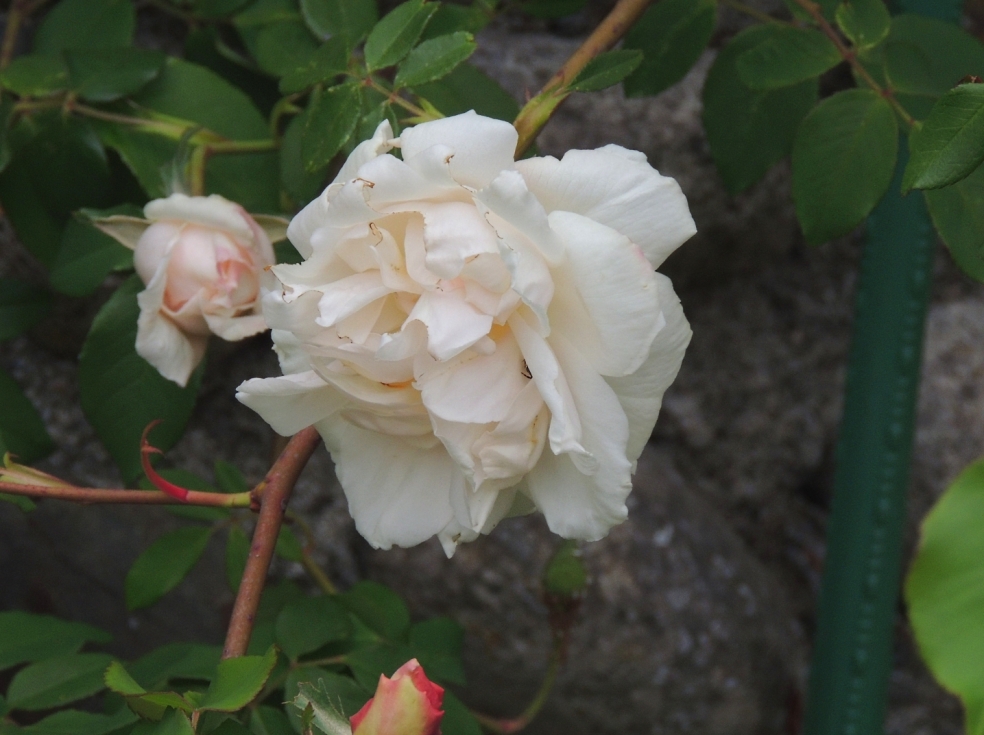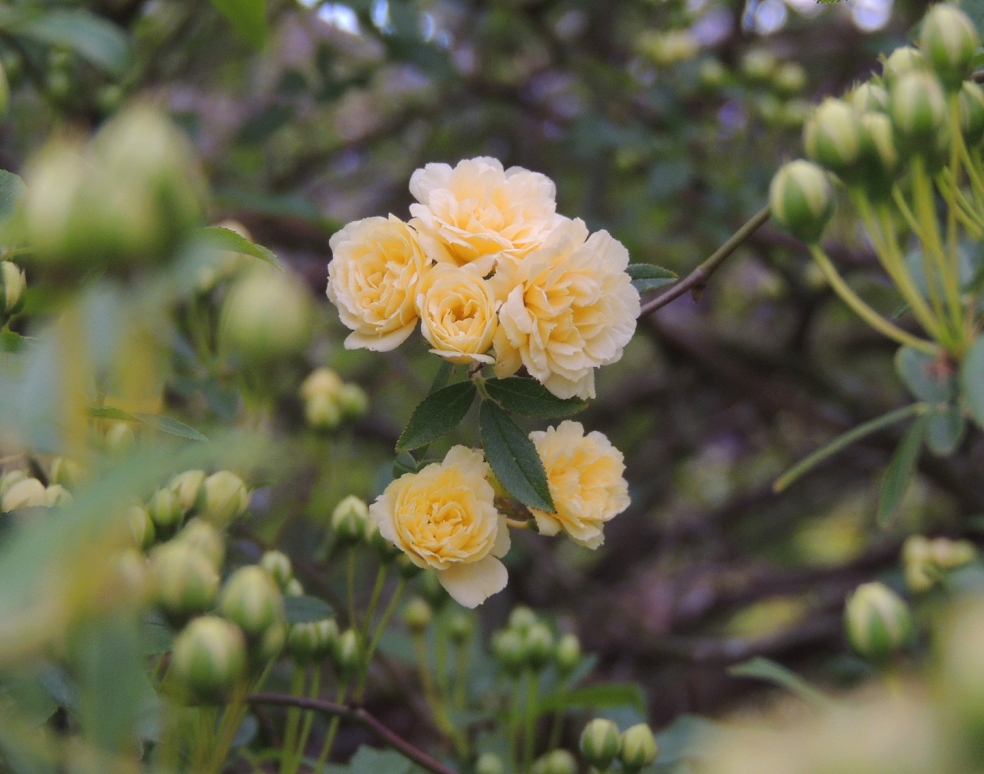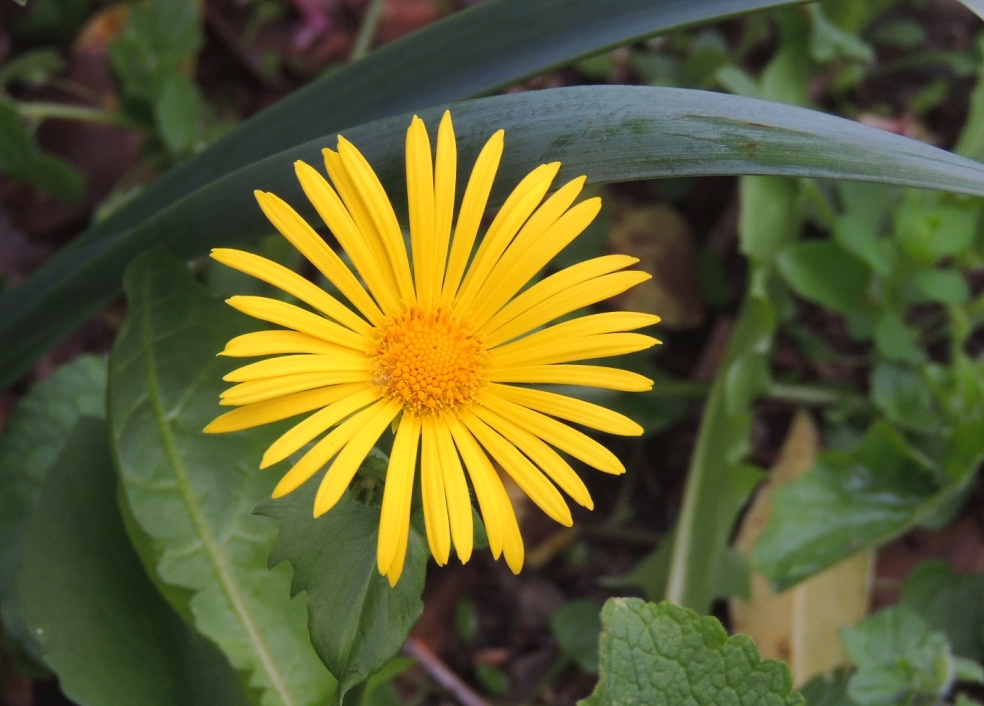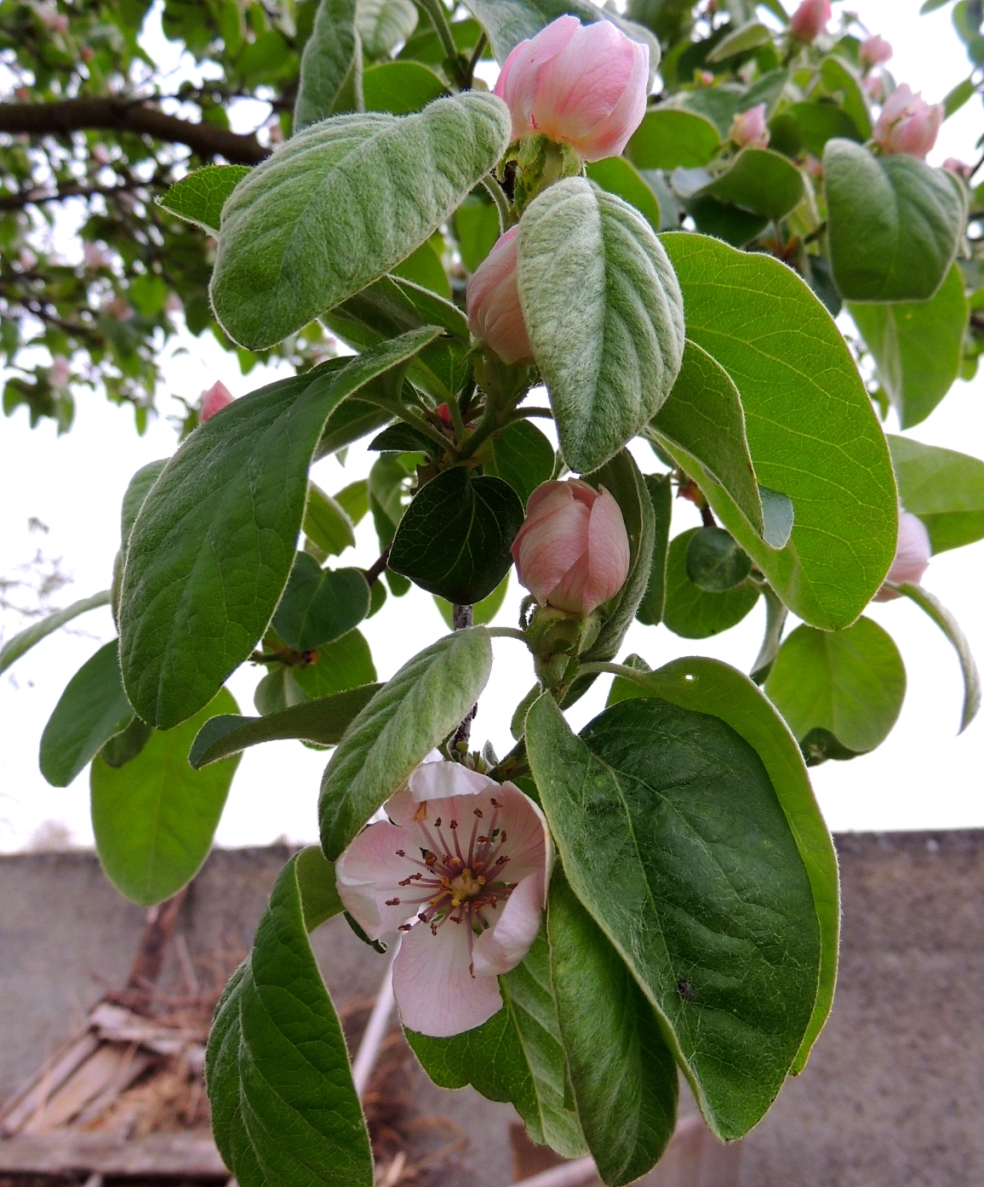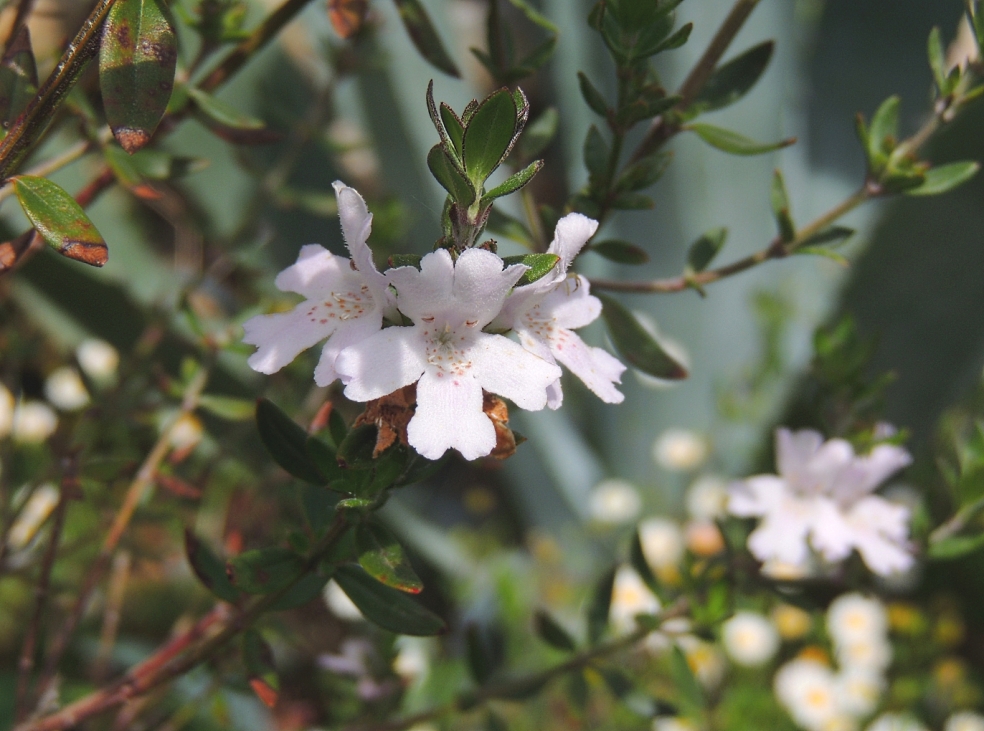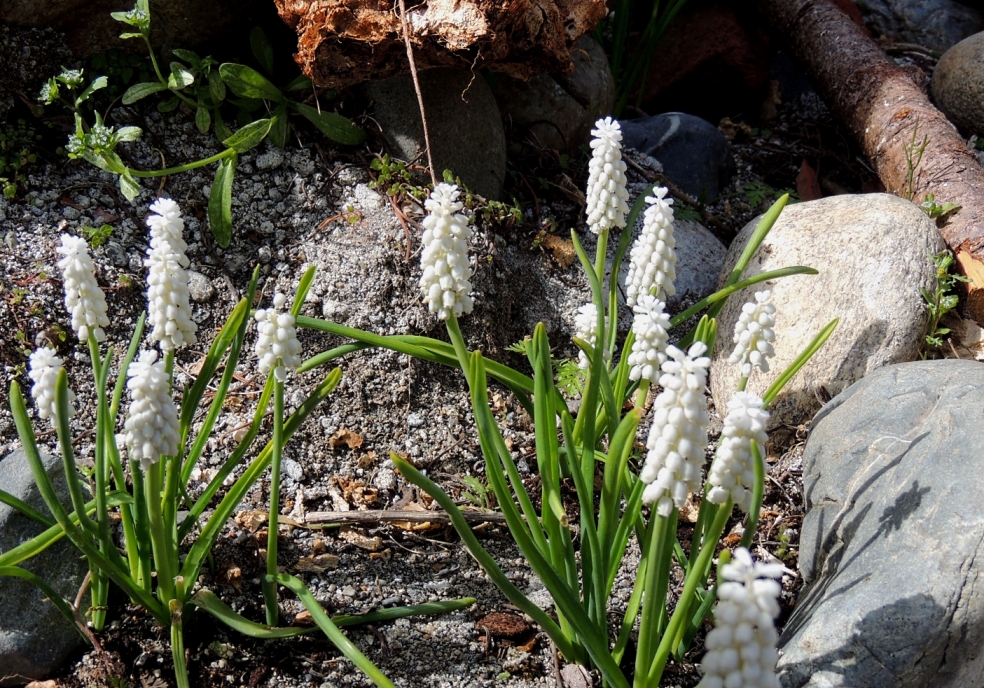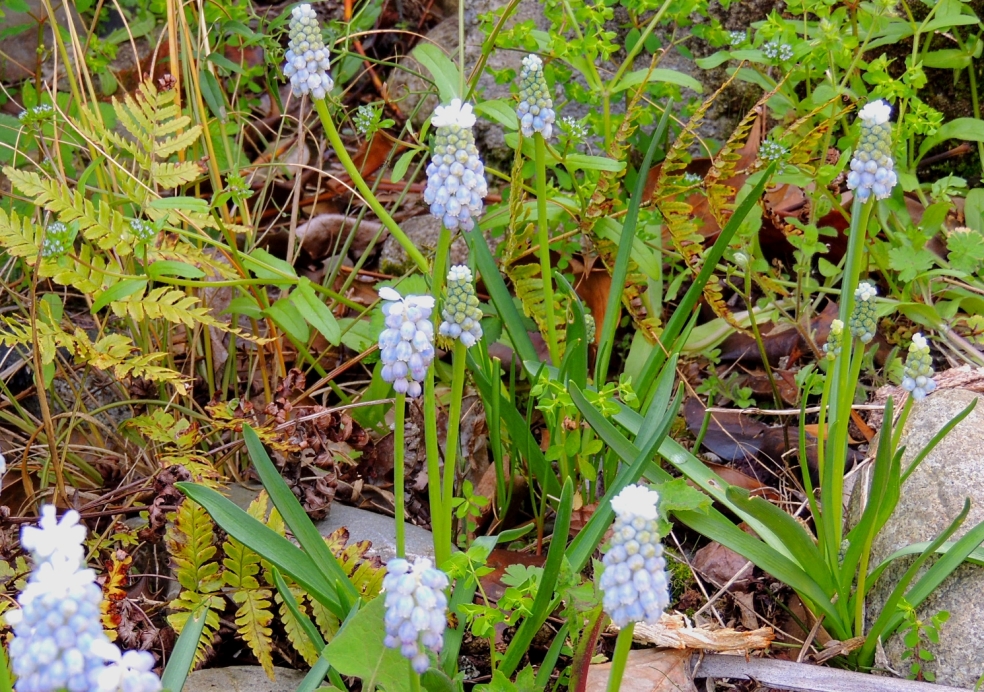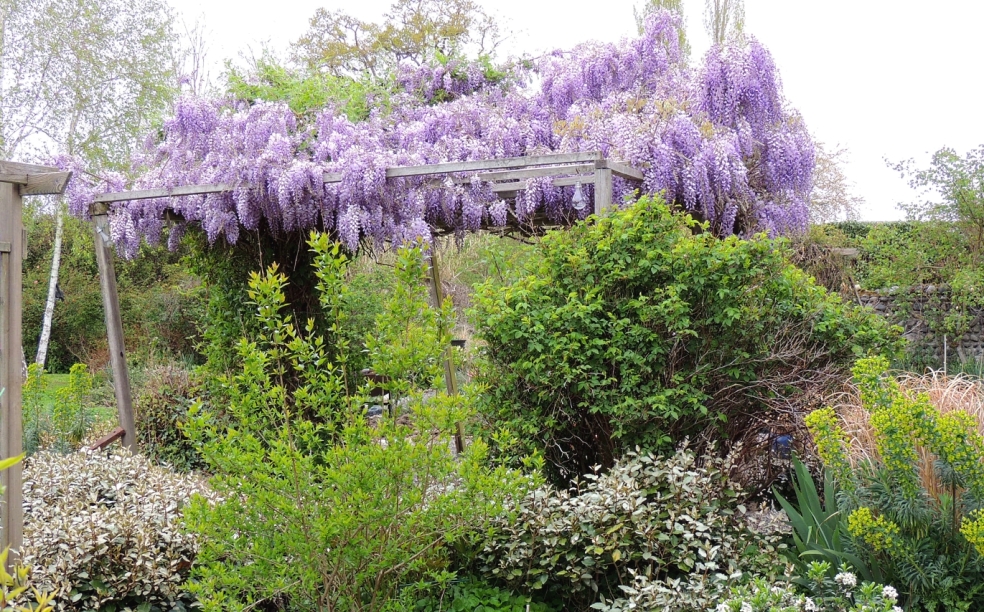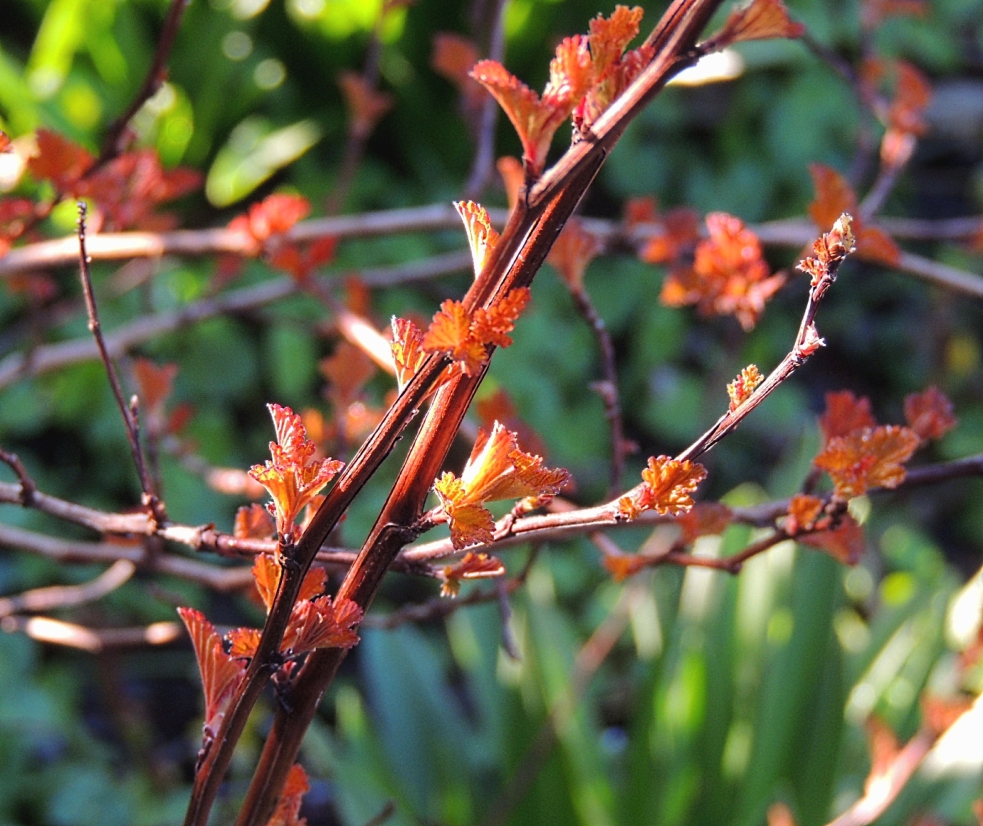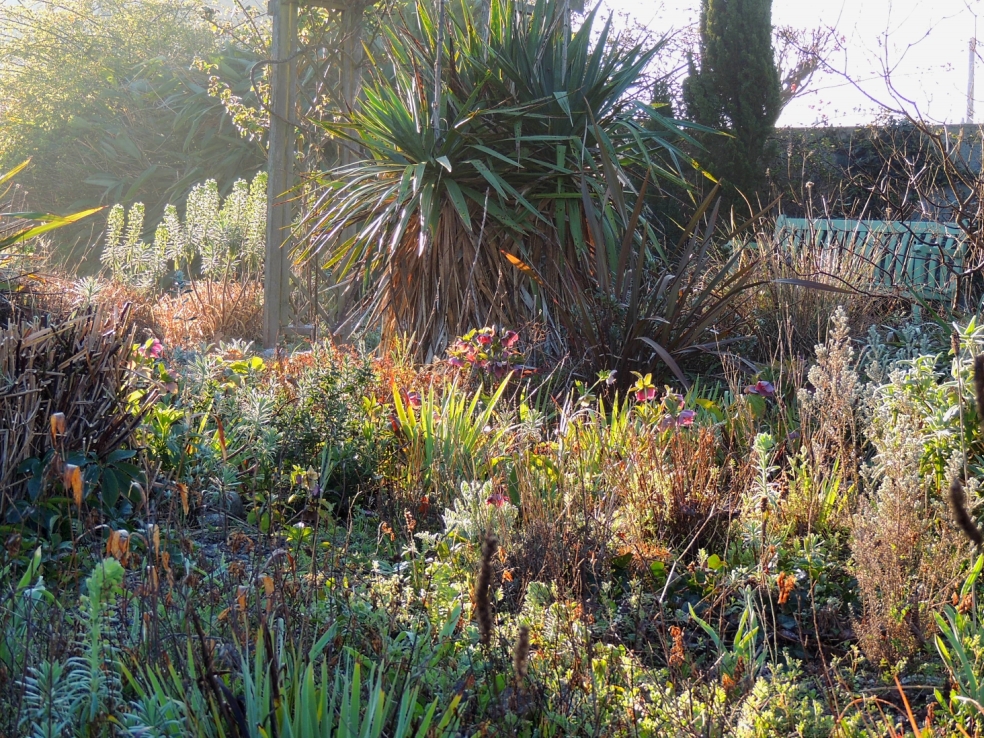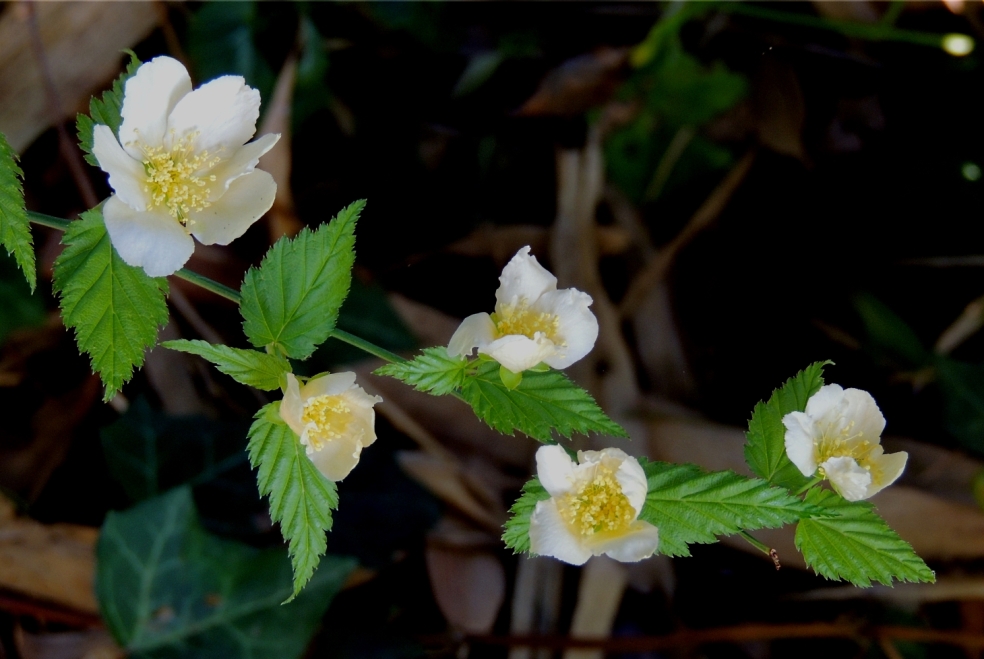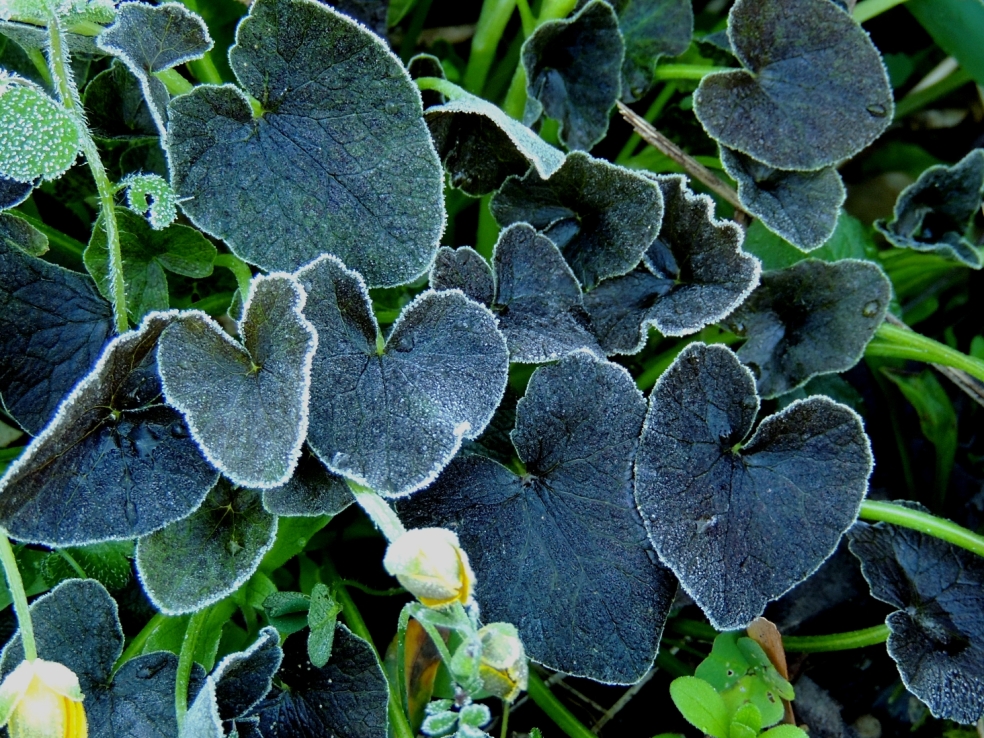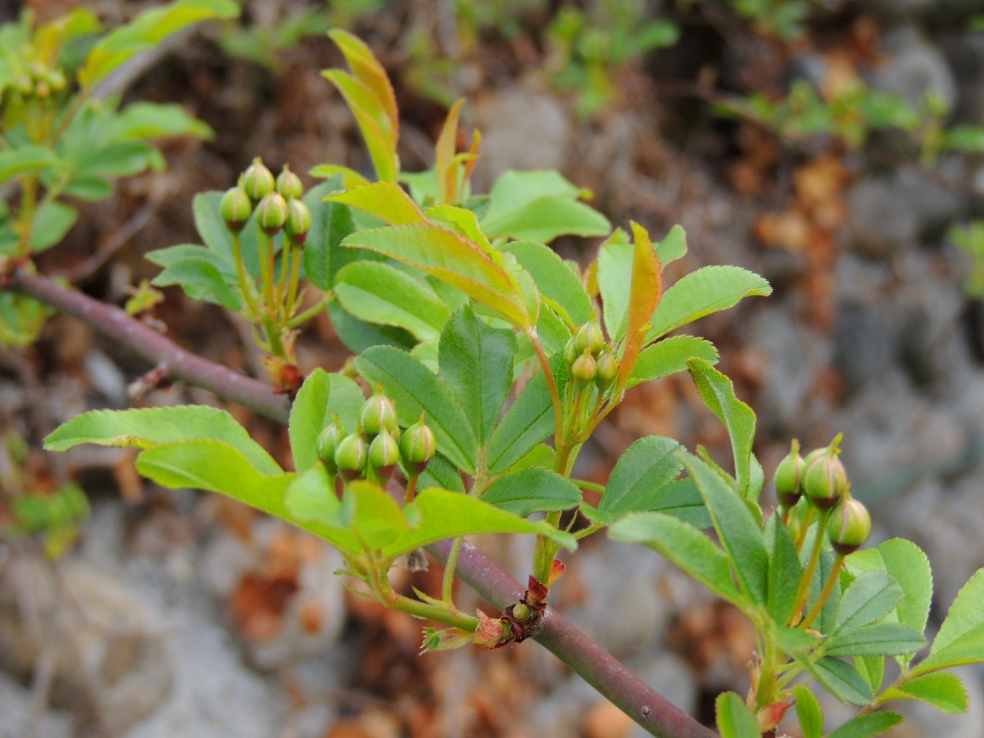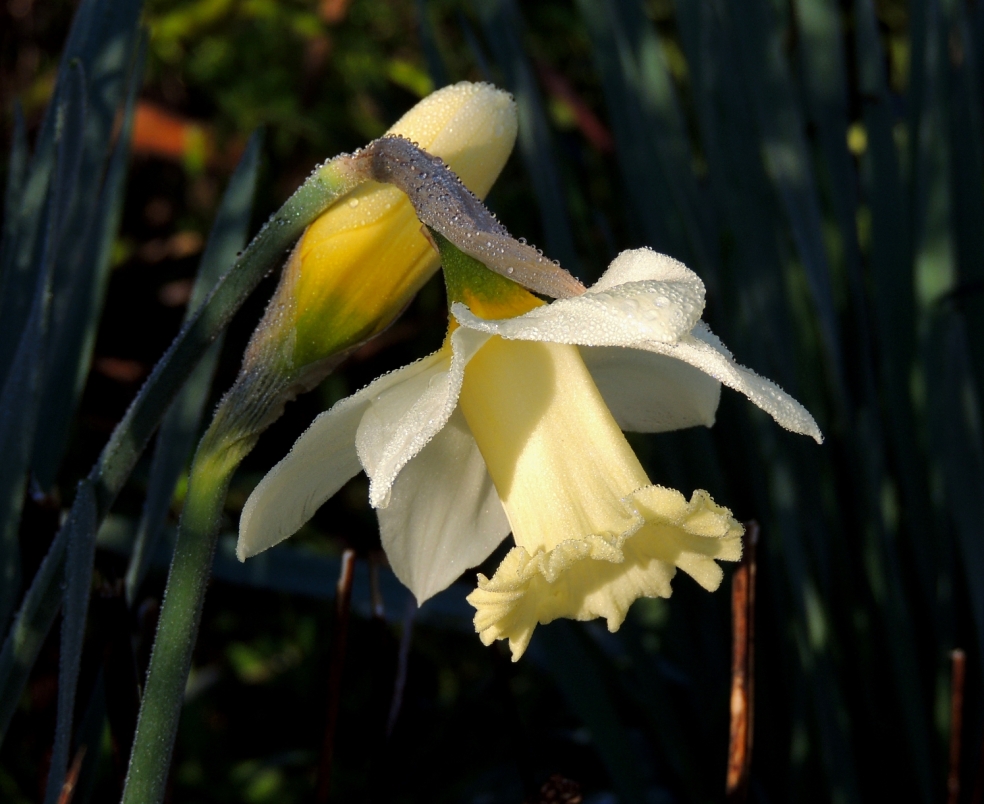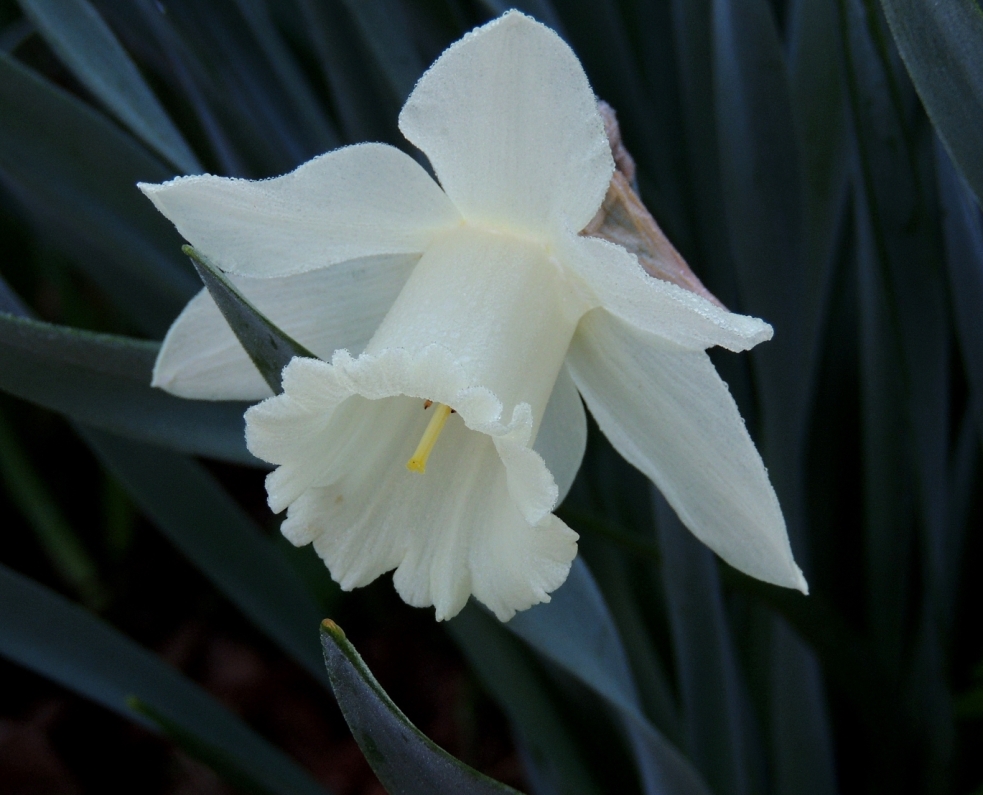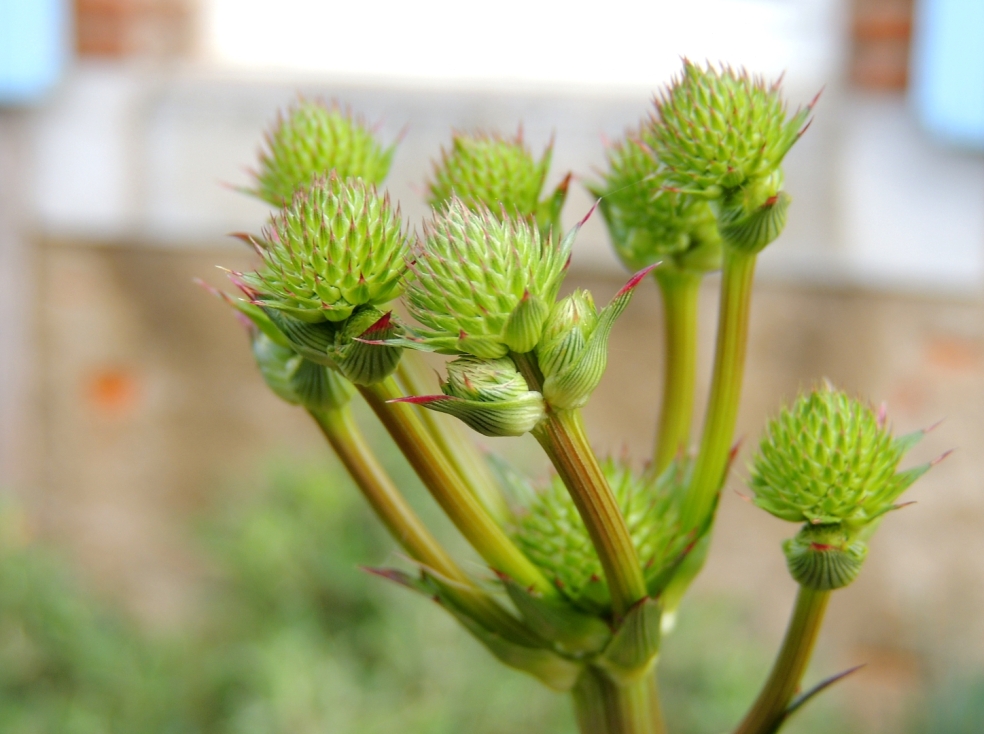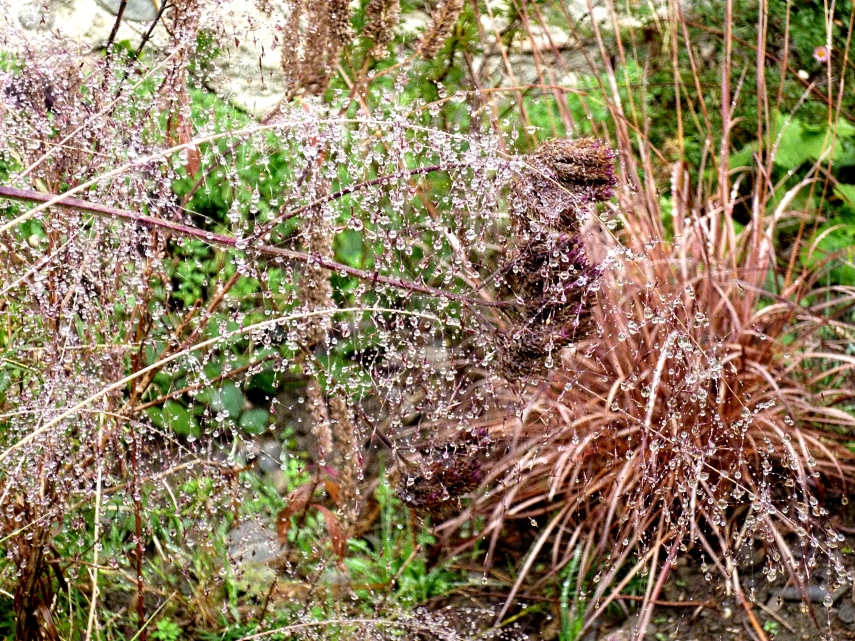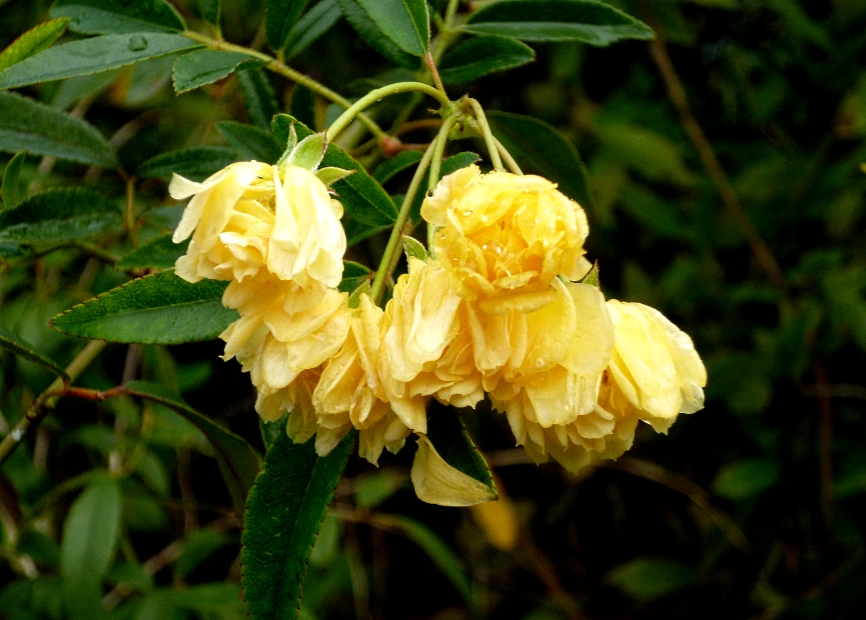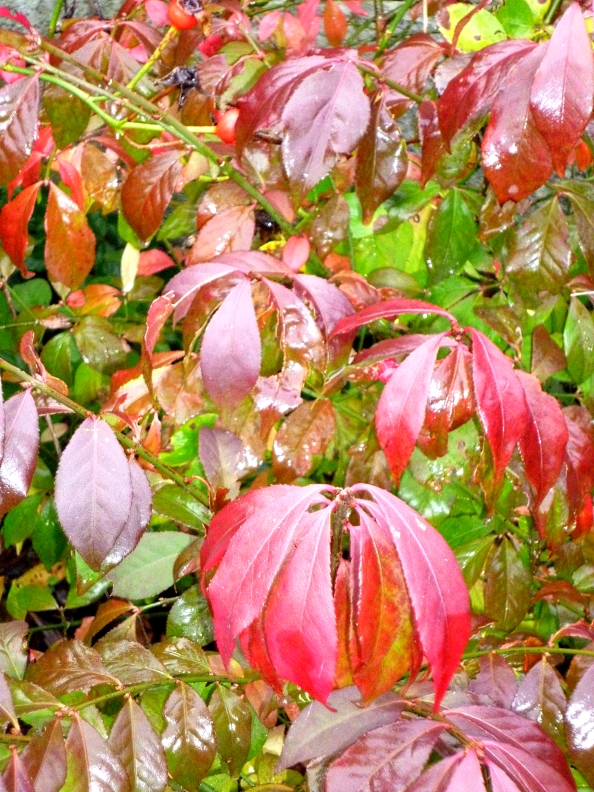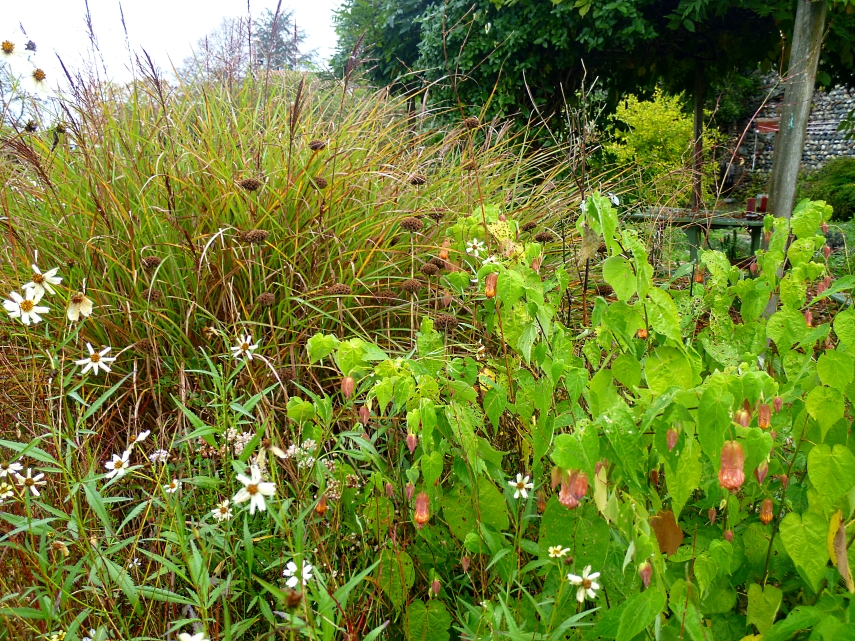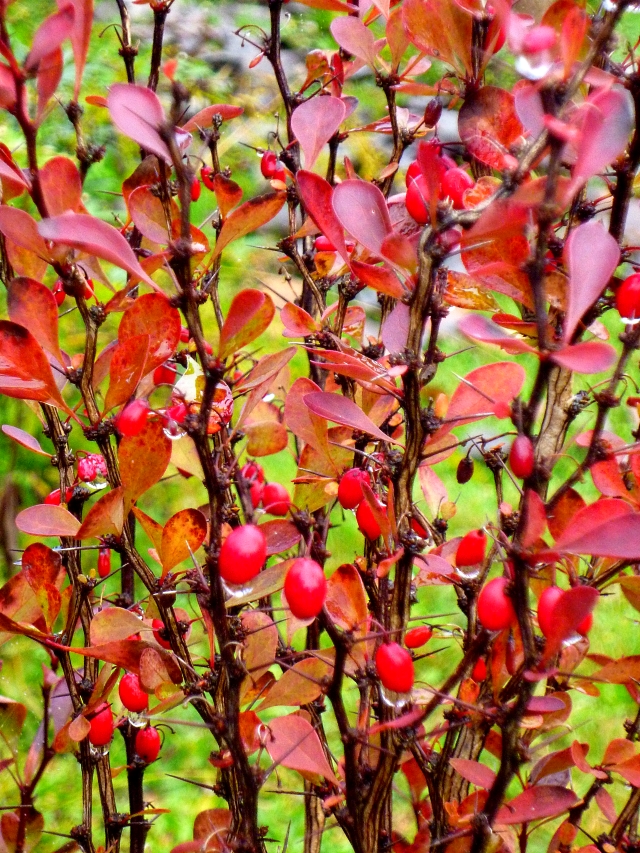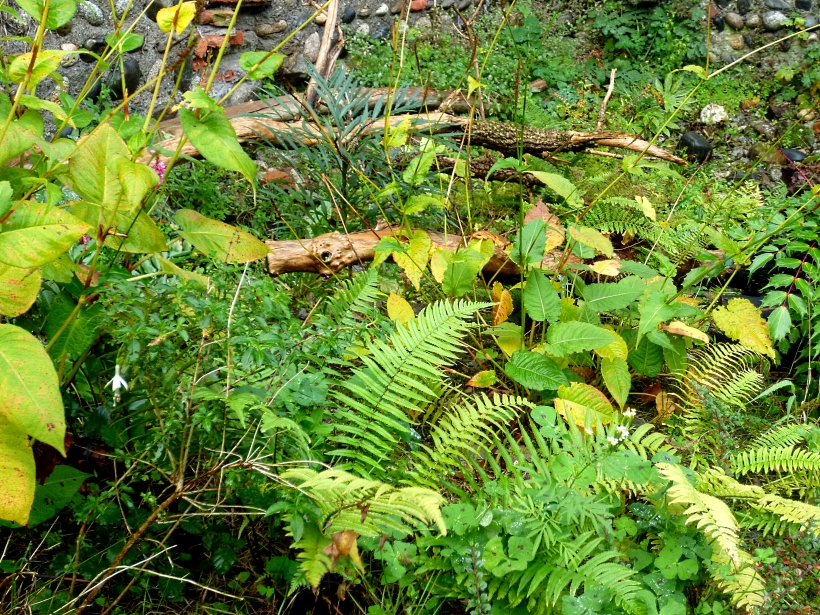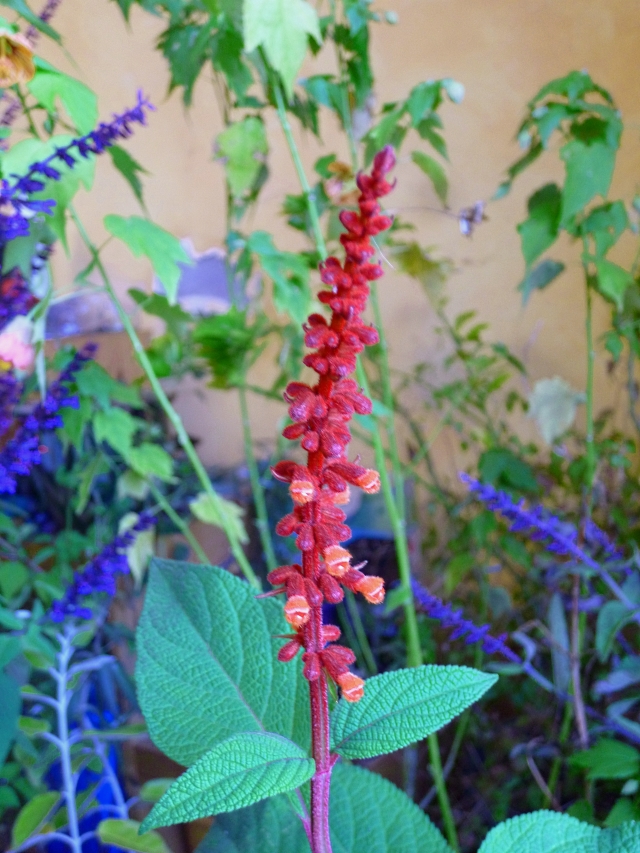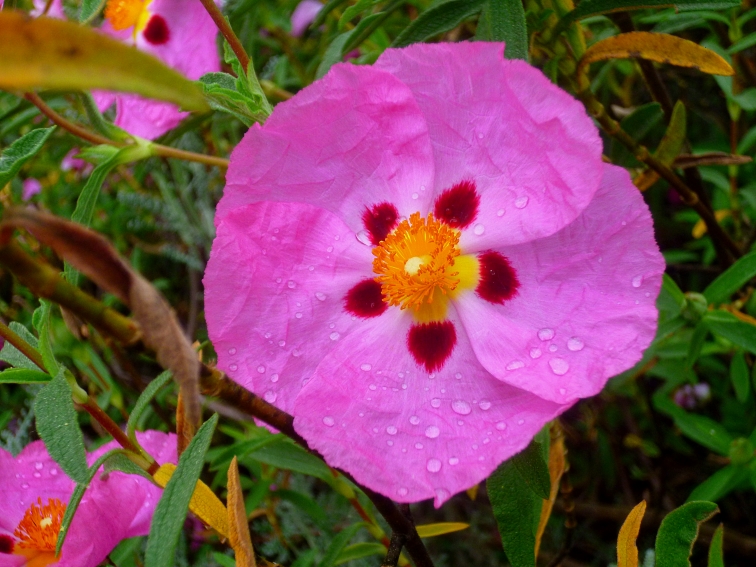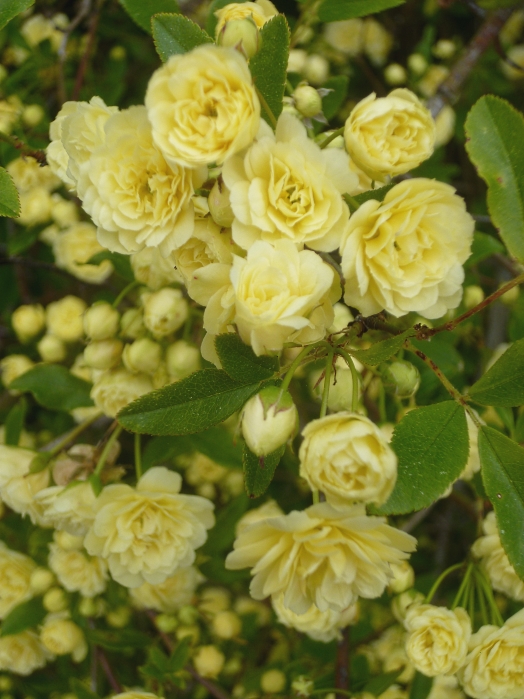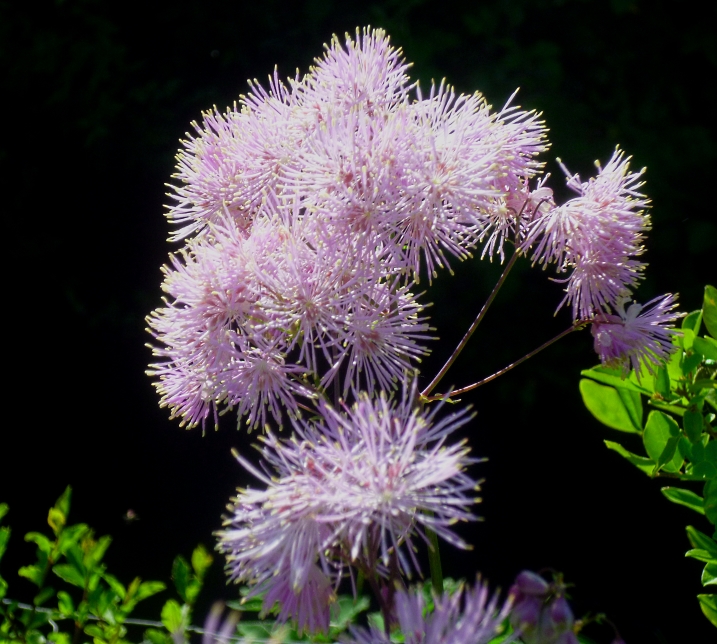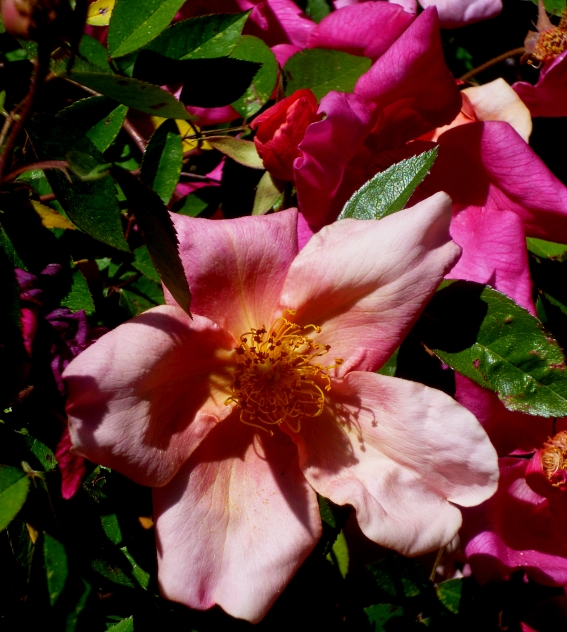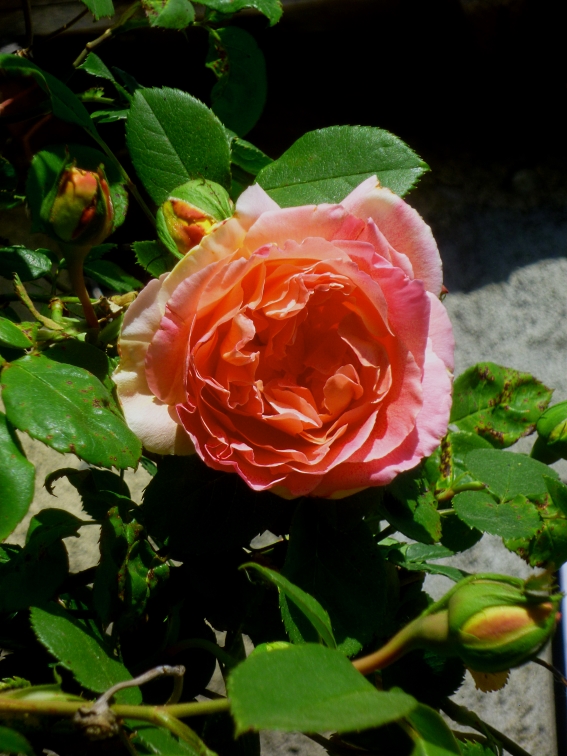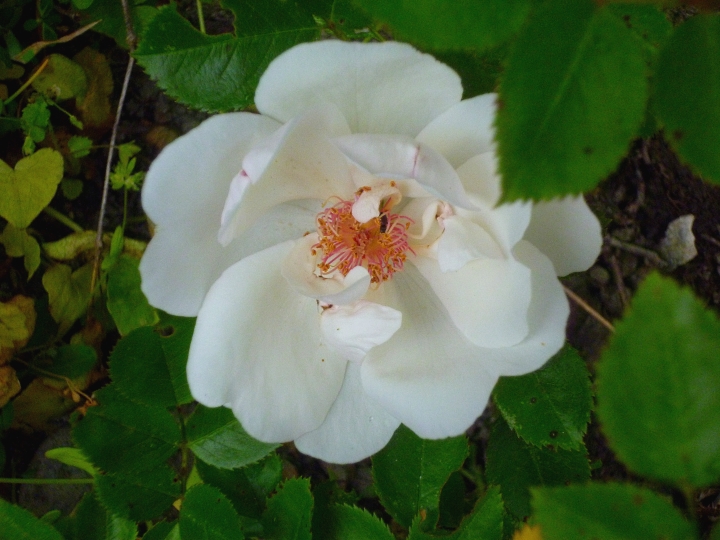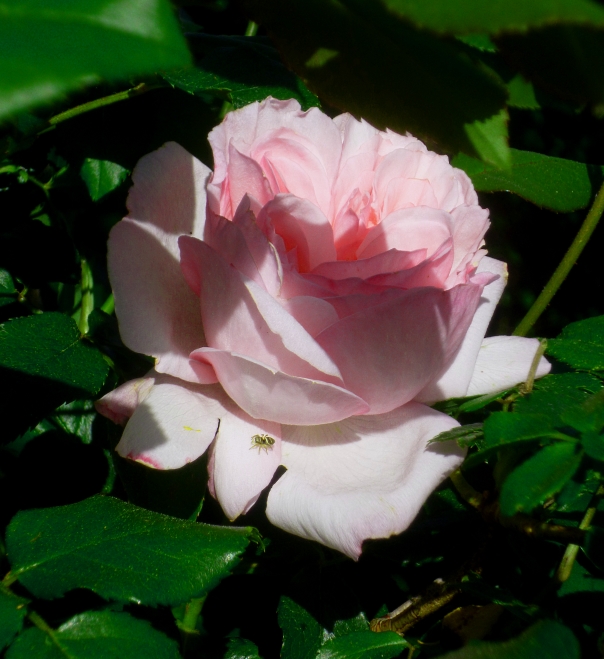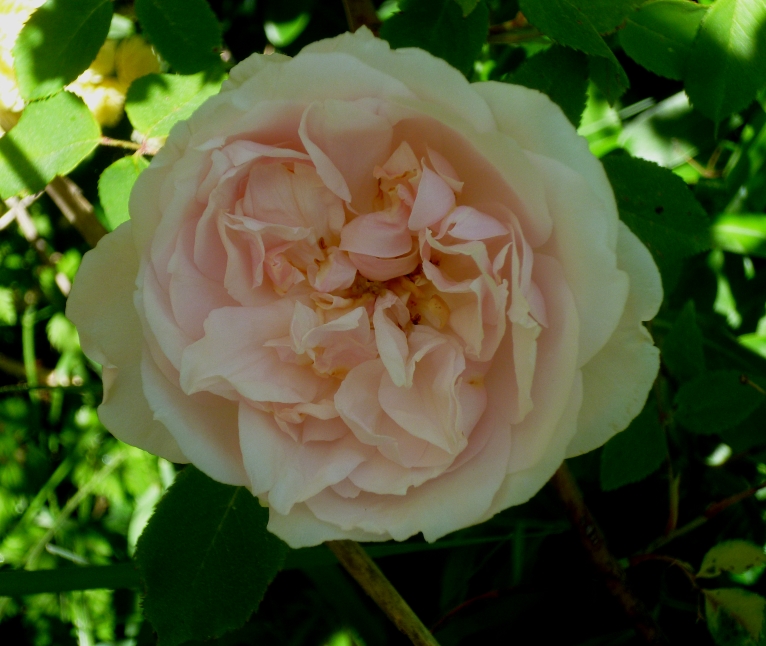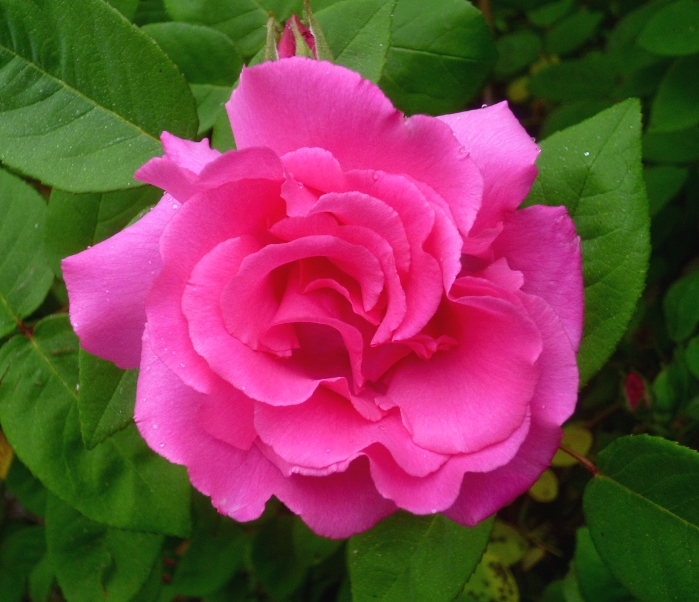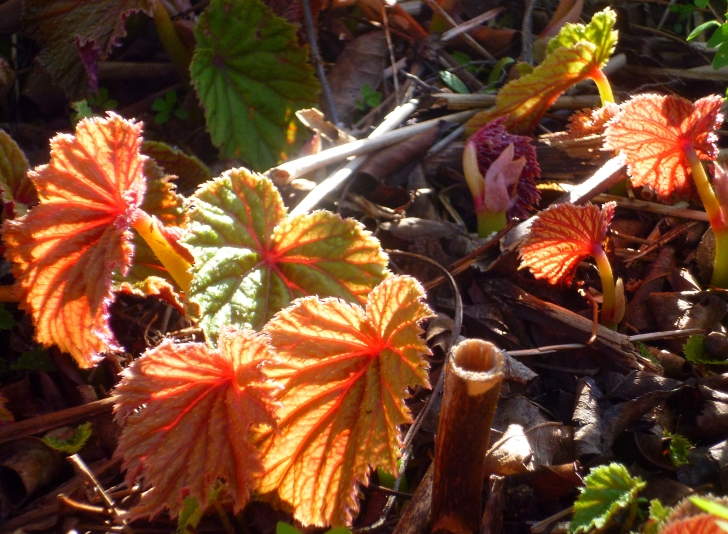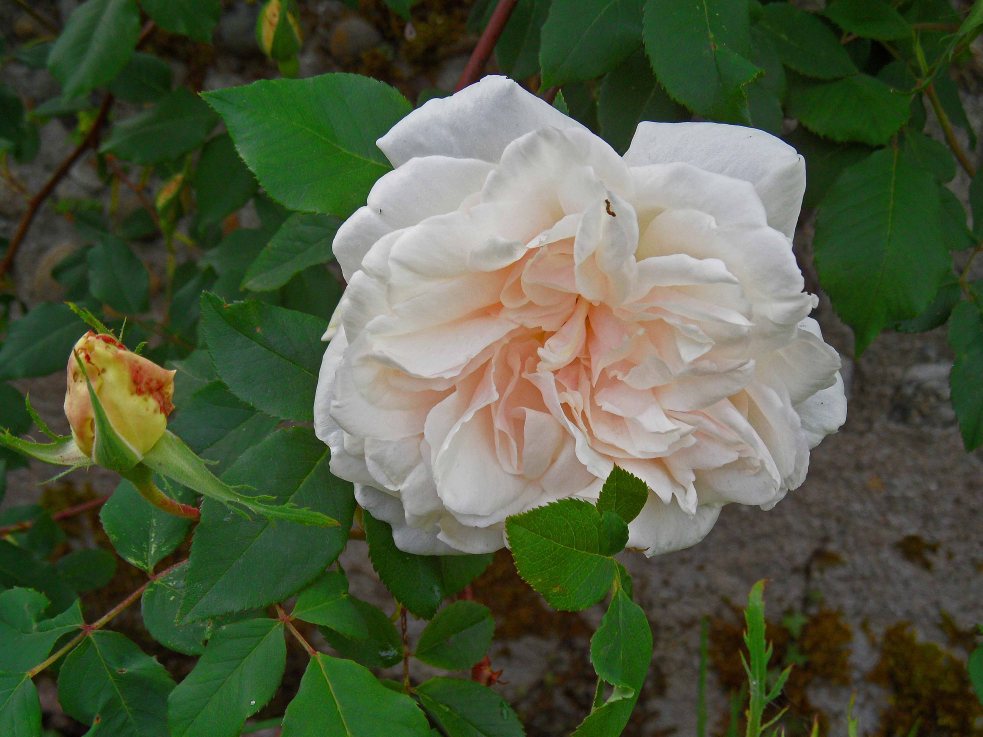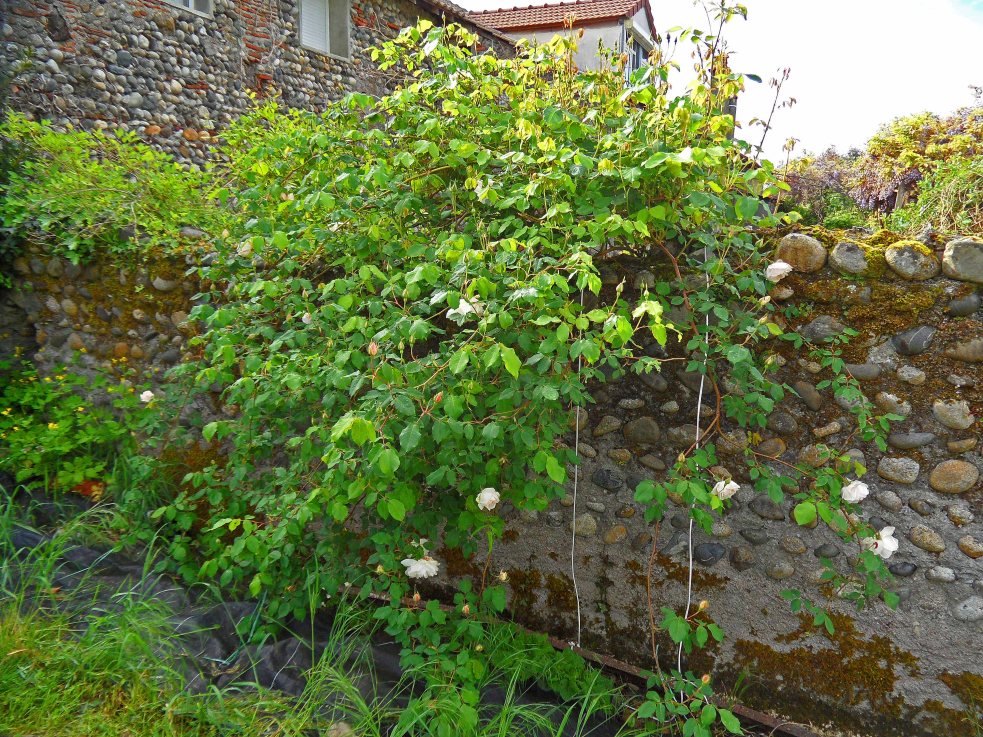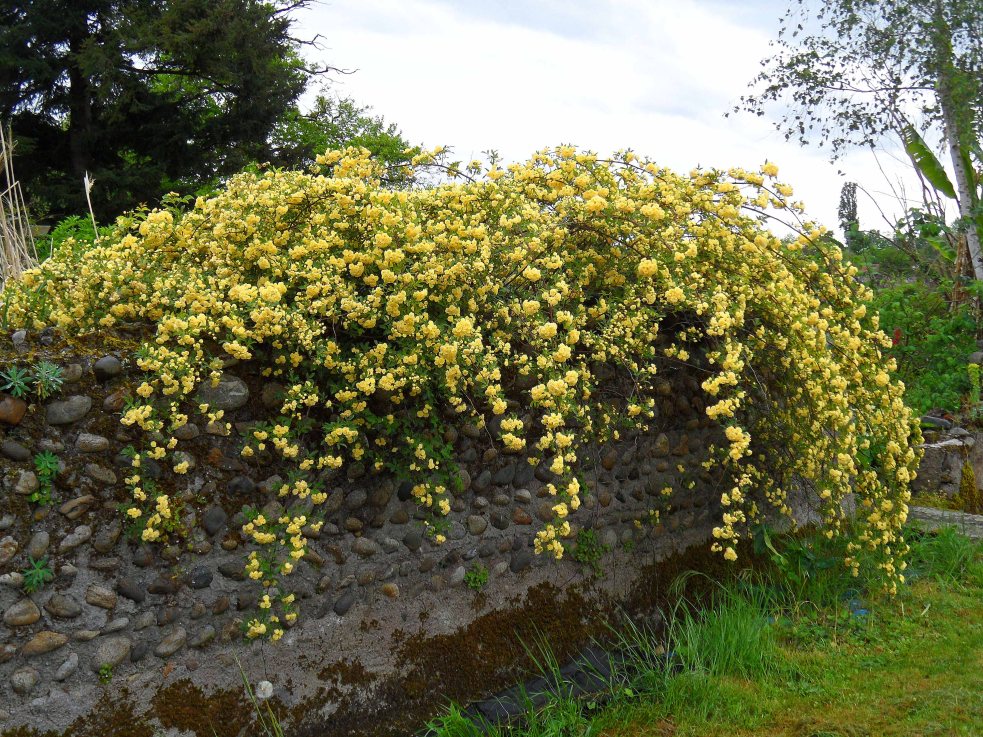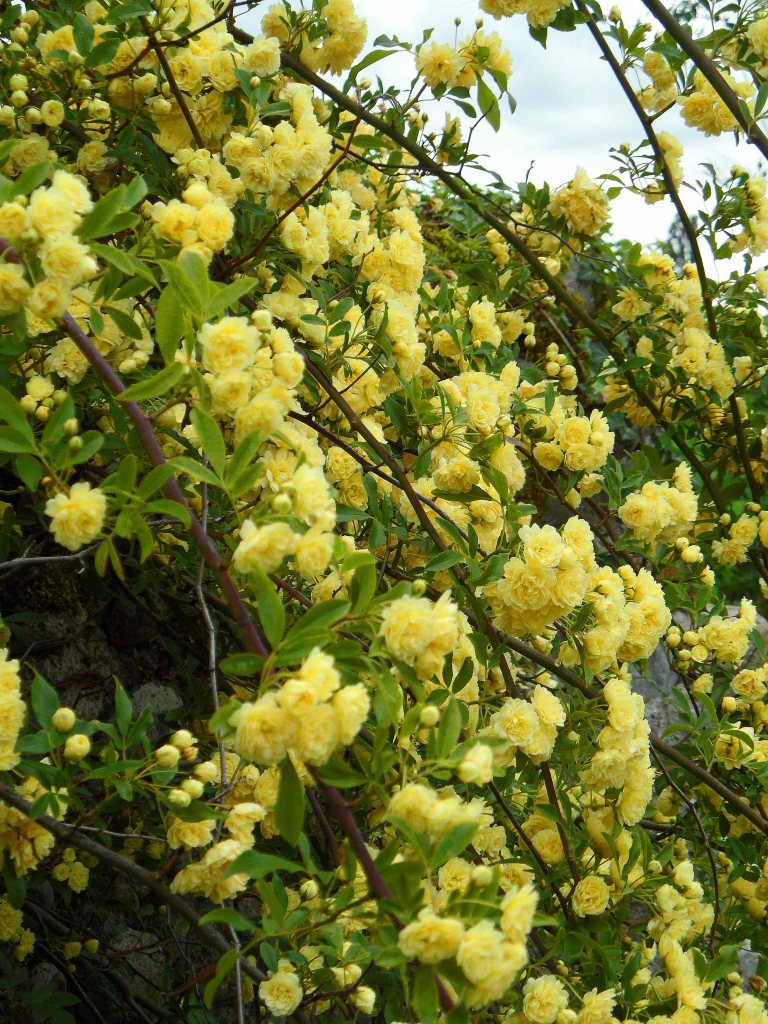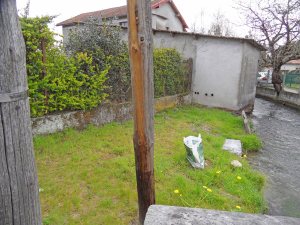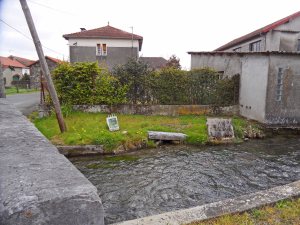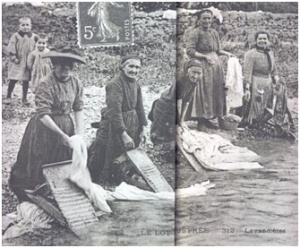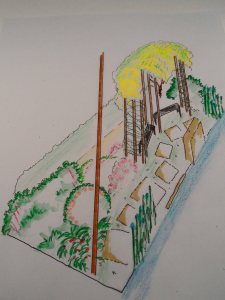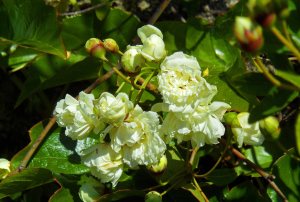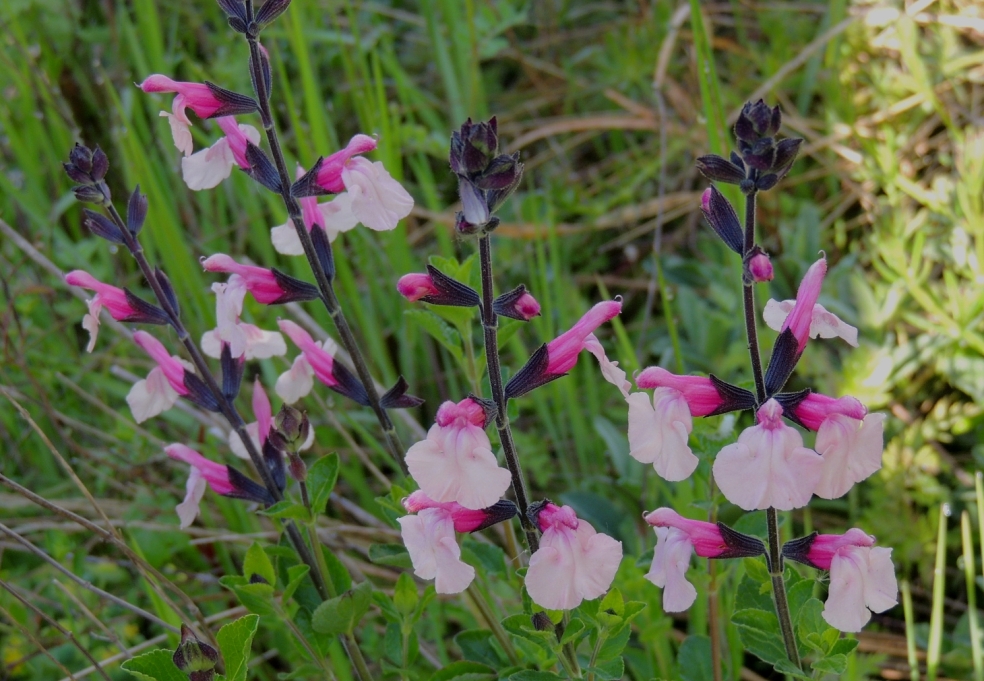
This is the time of year when the comeback kids return to the garden. Some are returnees every year because that fits their lifestyle- spring-flowerers or performers that disappear when the going gets hot. Others are genuine surprises- seeds that have stayed dormant for whatever reason and then germinate and pop up sometimes years after you have given up all hope- or they may be revived corpses. I have a few of those each year.
Salvia’ Dancing Dolls’ is a revived corpse. I had three scattered in the hot and dry border, ideal terrritory for them you would have thought. But no. In fact, I hadn’t even bothered giving it a post-winter pruning as I was pretty sure it was a goner. But just this week it has flowered more solidly than ever before, and now I remember why I liked it. It is saved from pink insipidity by the darker pink on the flowers and the lovely stems. Really worth it.
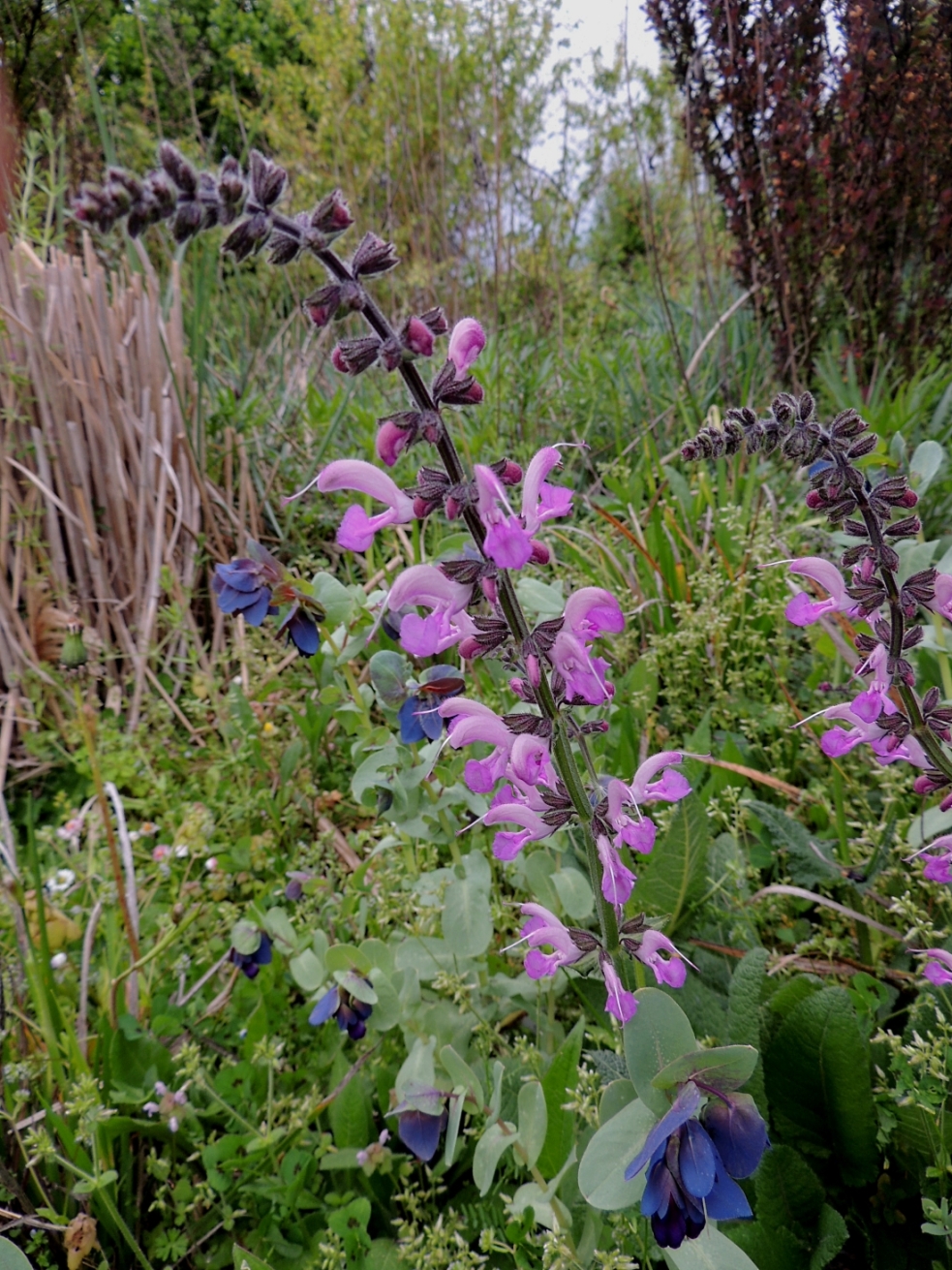
I have absolutely no memory of planting this Salvia pratensis. It may have been one of a whole load of seeds that I tried about 4-5 years ago, obviously I was successful with 3 or 4 small plants, and I planted them out. Then completely forgot about them, and they may well have taken this long to flower- which was what caught my eye, looking rather handsome I think against the dark blue-purple of the Cerinthe. I love that.
Note: Mine are clearly pink…so something is slightly different from the ones offered by Crocus.
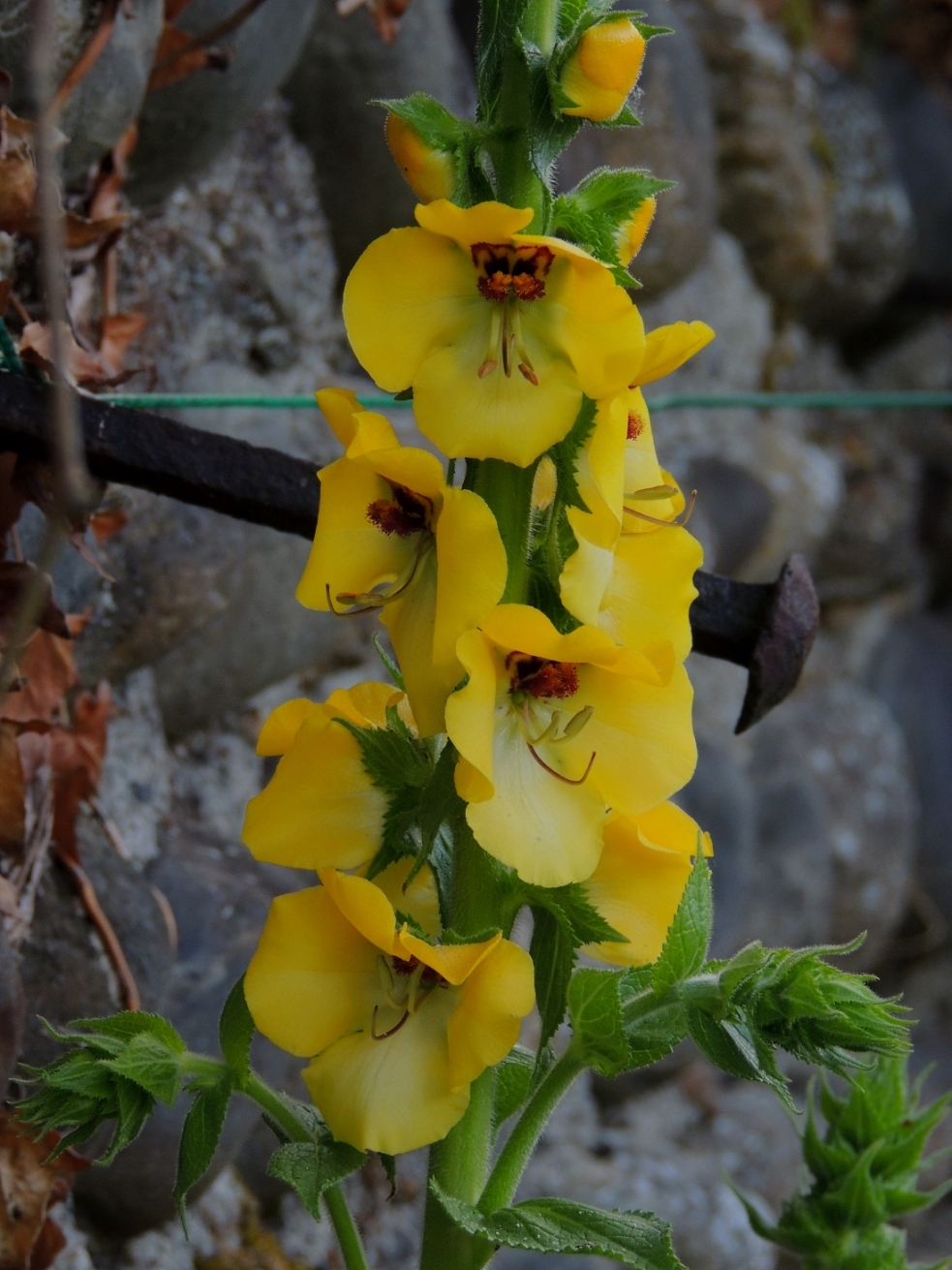
These Verbascum ‘Cotswold Queen’ were a seed effort easily five years ago- and disappeared entirely from view. They have the most elegant leaves- nicely serrated and spear-shaped, very distinguished-looking even in winter- and I left them in, recognising that they were something but not at all sure what. They have flowered in, around and beneath Rosa banksiae lutea, a softer yellow, for the last 2 weeks and with more flowers to open. The perfect plant in the perfect spot. Nothing to do with me.
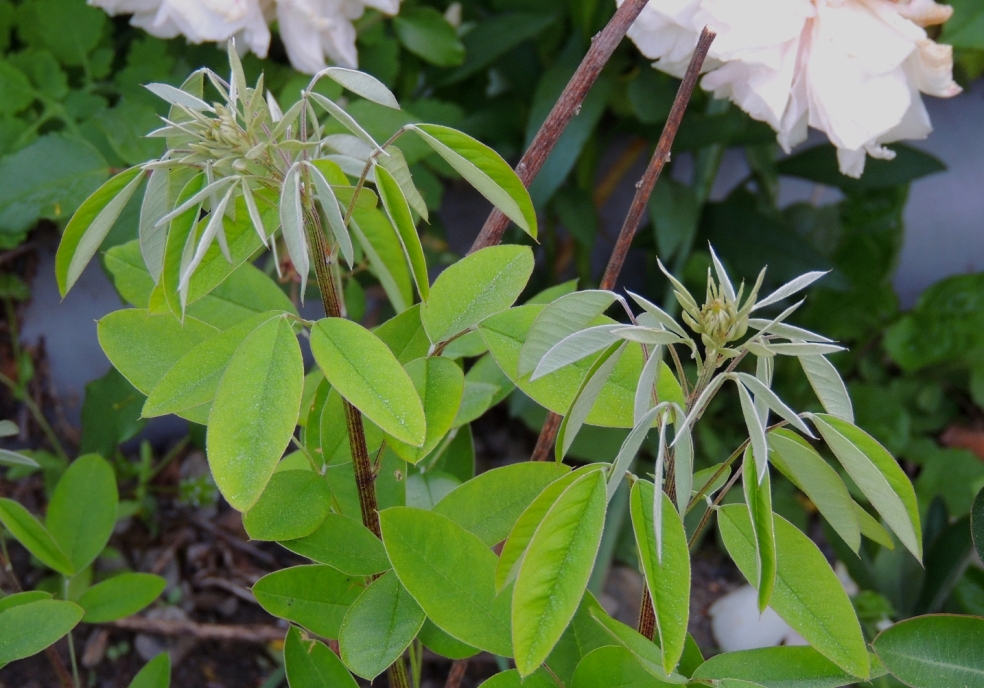
Lespedeza thunbergii is one of those lax, droopy, but very good hot and dry shrubs that just looks like matchsticks in the winter. But the spring growth opens like a host of umbrellas, and sets an elegant tone for the border. They hold their green arching branches and leaves in the heat, and only the flowers sometimes get a little toasted.
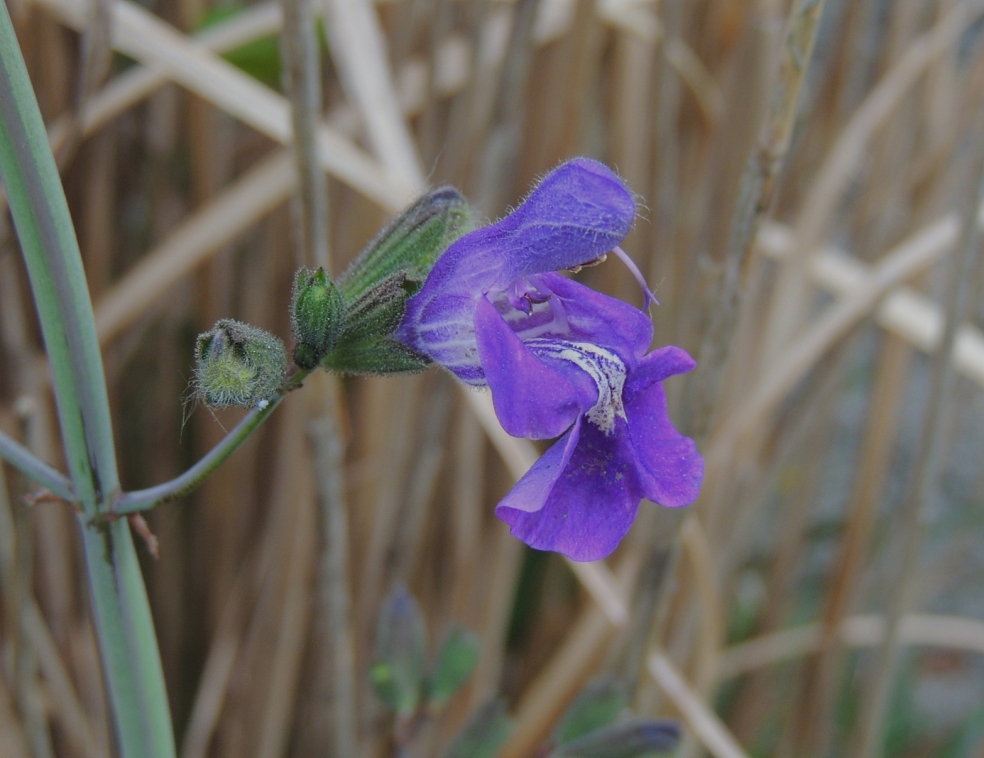
This is a giant of a Salvia, Salvia candelabrum– it makes a good big clump- and add in the flowers, on arching long stems of more than 1m, and you can see it needs space. It also needs needle-sharp drainage and preferably poorish, thin soil- with that it will survive -10C with no problems. I do try and help by not straining those requirements, as I have learnt the hard way that they are essentials. But each flower is such a gorgeous blue, five times the size of a normal Salvia flower, and spread apart from the other flowers on long arching stems. It will self seed, which is a real bonus.
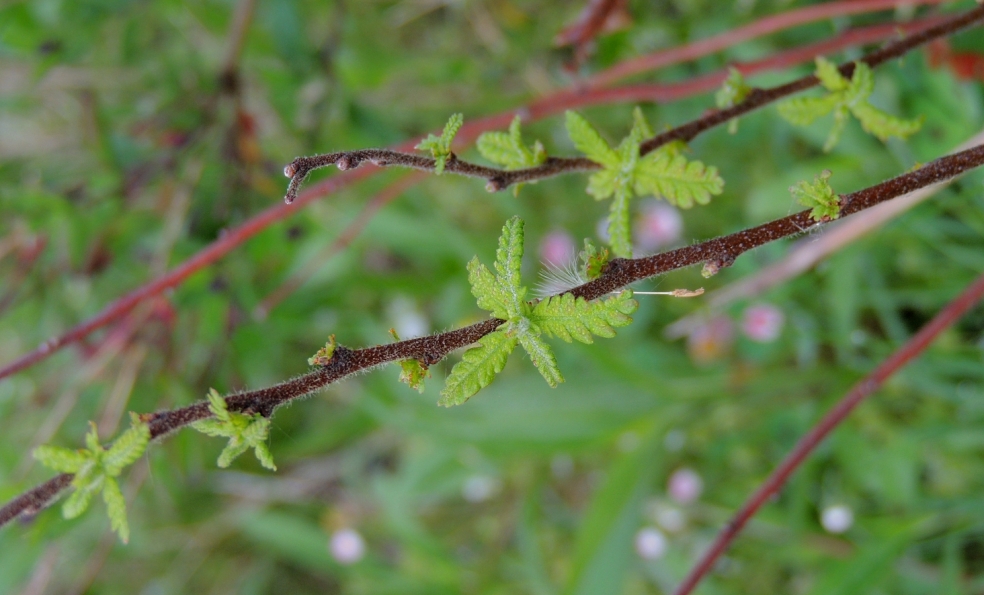
I am so pleased to see these baby leaves on the Comptonia peregrina. I have three plants, all bought last year or this Spring, and they were expensive because of their rarity here in France. I thought I had successfully killed one of them last year before I even got it planted, but I am touching wood right now as I have a hunch it is still alive. The leaves are emerging very slowly, so slowly that you almost doubt them. I am learning that this is a plant that is going to follow its own path no matter what I do. But I think it will be a great addition to some of my hot, dry spots needing reviving. Fingers are crossed.
We are in a cool, grey patch of weather while Scotland roasts…harrumph. Fair dos, I guess.
